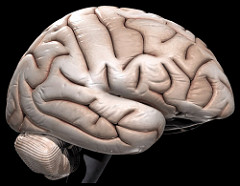Scientists are now able to grow human brain cells (neurons) in petri dishes by using induced pluripotent stem cells (iPSCs). These stem cells have the potential to become practically any type of adult cell, hence the name “pluripotent“. These cells are taken from a tissue, most likely skin or blood, and “reprogrammed” to be like embryonic stem cells. Scientists can also use human embryonic stem cells in place of iPSCs to create neurons. Brain organoids, which are clumps of cells that somewhat resemble brains, were accidentally discovered when Madeline Lancaster was “playing around” with neural stem cells (cells that can form neurons and other cells in the nervous system) and observed that sometimes they would form little 3D clumps.
Image Source: Science Photo Library – PASIEKA
Although this is a big achievement, as it provides insight into neuronal growth, development, and function, scientists aren’t able to grow a full-sized brain from a dish just yet. The organoids can grow up to only a limited size, with a diameter of around 4 mm, compared to the size of the average adult brain, which is 167 mm in length. Furthermore, although they do have the ability to form a few specialized layers of brain tissue, some regions in the brain either don’t develop fully or at all. Scientists also encountered the initial problem of finding a way to provide nutrients to the central tissue of the organoids, as there aren’t any veins to do so. Without the support of a circulatory system, which includes veins, the organoids are unable to grow any bigger.
These neurons play an important part in providing scientists the ability to see how neurons develop. Furthermore, they also give researchers the potential to make scientific and medical breakthroughs in the future. Being able to take samples of neurons from individuals means being able to see how some neurological disorders, such as Alzheimer’s disease or schizophrenia, affect neurons and their development. Although the grown neurons aren’t exactly brains growing in a dish, they have helped scientists better understand and observe firsthand the function and development of neurons.
Feature Image Source: Brain by AJC1










